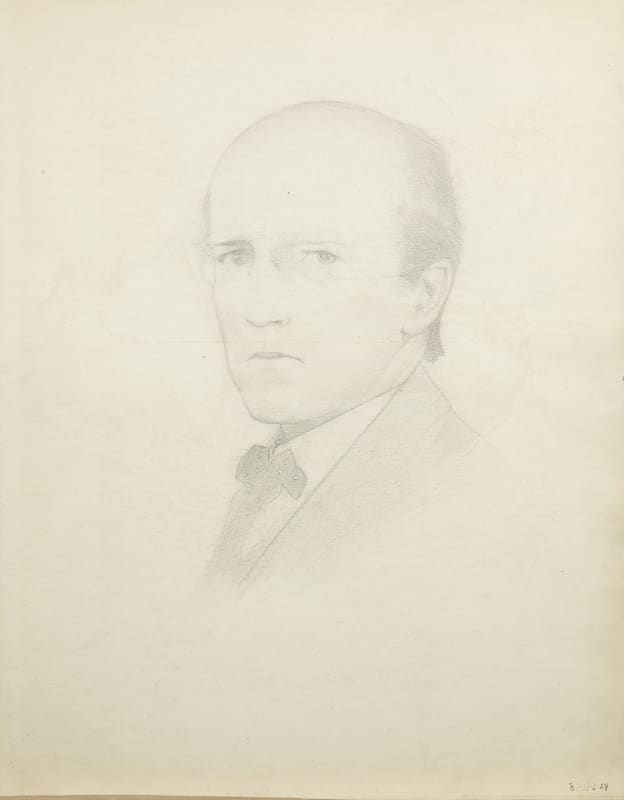Elected ARSA: 16 March1910
Elected RSA: 14 February 1923
John Duncan was born in Dundee in 1866 and died after a lingering illness, on 24th November, at his residence 29 St. Bernard’s Crescent, Edinburgh. From boyhood Duncan’s life was devoted to art. At the age of eleven he studied at the Dundee School of Art, and shortly afterwards began to draw for a local paper “ The Wizard of the North,” and the “Dundee Advertiser.” After seven years of this he proceeded to London and worked on book illustration for three years. Thereafter, followed a short period of study at Antwerp and Düsseldorf; a spell in his native town, where he painted several portraits; and a winter in Italy.
This first Italian visit fixed Duncan’s future aim, and his association with the powerful engendering spirit of Professor Patrick Geddes, the publisher of “Fiona McLeod ” and “The Evergreen,” with their revived Celticism, gave the inspiration and opportunity to create some of his most personal expressions in the decorations in Ramsay Lodge and in the house of Geddes at 14 Ramsay Garden. Before settling finally in Edinburgh, however, Mr. Duncan spent three years in Chicago as Associate Professor of Art at the University , and a similar period in Dundee, when he was occupied with a group of panels for a French chateau.
A considerable part of the decorative work of Mr Duncan was ecclesiastical—altarpieces, Stations of the Cross, and wall decorations, noteworthy among them being a series of paintings for St. Hilda’s Priory, Whitby. This church connection was continued by the windows in stained glass which he executed in late years for North Morningside Church, Newbattle, Paisley, Carnoustie and Morar.
His easel pictures have the same two-dimensional and linear aspect as the work he designed for a particular place. Most of them, and latterly all ,were in tempera, a medium in which he made numberless experiments and of which he had a unique knowledge .It is regrettable that he did not publish the results of his extensive investigations. Led to these by his love of the early Italians, he did, indeed achieve precisely the same technical results. The Diploma Work, “Ivory, Apes and Peacocks,” is an excellent example of his method and outlook and shows his very characteristic phantasy.
Elected an Associate in 1910, Academician in 1923, Mr. Duncan was Librarian from 1925 to 1945. Typical works are to be found in the Corporation Gallery, Glasgow, “The Comino of Bride” ; the “Riders of the Sidhe” in Dundee; in the Scottish Modern: Arts Association and our own Thorburn Ross Fund Collections. A large collection of his paintings was shown in the National Gallery in 1941.
A man of sensitive culture, with a wide knowledge of the history of art and literature, Donneachie had the faculty of gathering round him groups of young artists and imparting his enthusiasm, particularly for Celtic and Greek mythology and the Primitives of the Italian Renaissance. And, popular as he was with the young, he was equally esteemed by his contemporaries of the Arts Club, of which he was President for several years. He is survived by two daughters.
RSA Obituary by Frank C. Mears and David Foggie, transcribed from 1945 RSA Annual Report

